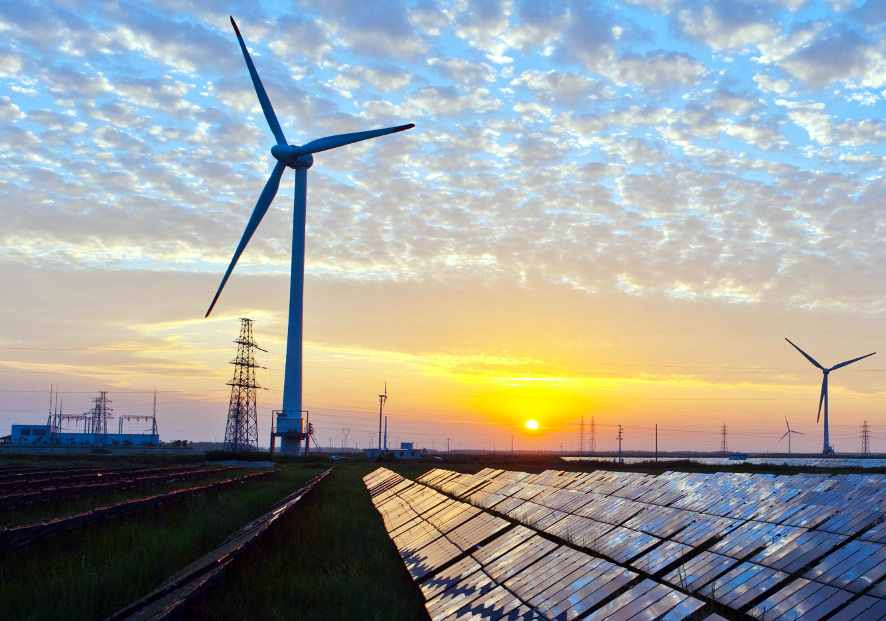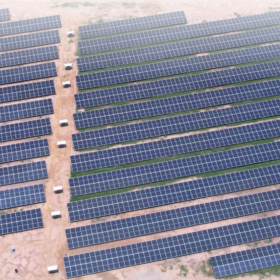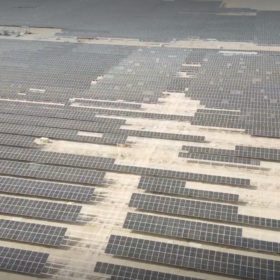The Indian government’s $122 billion (INR8.83 lakh crore) commitment to support the energy sector since January 2020 could chiefly benefit the fossil fuel sector, even though spending has allocated renewables almost twice the amount earmarked for greenhouse-gas (GHG)-heavy fuels—according to a new report.
The How Green is India’s Stimulus for Economic Recovery? study stated, out of the $122 billion in energy-related funding announced since January 2020, the Indian government had committed $35 billion (28.5%) to renewables, almost twice the $18 billion (15%) flowing to fossil fuels. However, a large proportion–amounting to $69 billion (56.5%)–supported ‘other’ energy finance.
The report–published by U.S. thinktank the Institute for Energy Economics and Financial Analysis (IEEFA) and Canadian peer the International Institute for Sustainable Development (IISD)–stated, at the moment, India’s policies for ‘other energy’ primarily support power transmission and distribution companies and, therefore, may disproportionately benefit fossil fuels even if not targeted explicitly at GHG-emitting production or consumption. For example, the liquidity support to electricity distribution companies to build infrastructure, modernize the grid and settle payment dues to generators, could support the dominant fossil fuel generators more than renewable energy providers.
State-level fuel and transport policies, the development of power projects, and transmission infrastructure are also categorized as ‘other energy’, the thinktank report added.
The publication reviewed energy-related policies using the Energy Policy Tracker (EPT) developed by IISD to determine how India could better drive a green economic recovery.
“According to the EPT, India has committed more public money to the energy sector than any other economy globally since January 2020,” said lead author and IEEFA energy economist Vibhuti Garg. “We estimate that around 22% of the value of these public money commitments [is] primarily to deal with the impact of Covid-19, and the rest is to meet the government’s ongoing policy objectives on energy security, air pollution and climate change.”
Global vs Indian commitments
The Energy Policy Tracker indicated, as of March 3, some 31 major economies had pledged more than $686 billion to support energy through new or amended policies since January last year–with that statistic excluding energy-related funding from U.S. president Joe Biden’s new $1.9 trillion American Rescue Plan.
Of that global figure, $274 billion (40%) has been committed to fossil fuels, $259 billion (38%) to renewable energy, and $153 billion (22%) to “other energy,” including nuclear power, first-generation biofuels or policies to support multiple sources of energy.
By comparison, more than half (56.5%) of all the public money committed to energy in India will support ‘other energy’.
The report points out India’s commitments in the Energy Policy Tracker are only an “at least” value and could, in fact, be much higher than $122 billion.
“The EPT only quantifies the cost of a policy that can be drawn from publicly available sources,” said report co-author Max Schmidt, a Carlo Schmid Fellow with IISD, who tracks and analyses energy policy developments for the tracker tool.
“With more transparent reporting, we would likely see support skewed towards fossil fuels rather than renewable energy. But as of now, the picture in India is incomplete,” said Schmidt.
Recommendations
Study co-author Christopher Beaton, lead for sustainable energy consumption at IISD, stressed India needs to raise the bar for a green economic recovery, and increase its commitment to renewable energy as it strives to achieve its goal of net-zero emissions by mid century.
“There is still time for India to shift energy policies towards a truly green recovery–a move that would bring the government closer to achieving its long-term objectives on energy security, air pollution, and climate change,” said Beaton.
The report makes six recommendations for India’s green recovery:
1. Strengthen green industrial policy: As part of restarting the economy, the government should invest in India’s capacity to manufacture for the green energy revolution.
2. Invest in large scale renewables grid integration: Instead of just investing in trying to fix the problems of its electricity distribution system, India needs to start investing in the distributed-generation system of tomorrow.
3. Improve energy access: Increase adoption of distributed rooftop solar energy sources and energy efficiency measures. These are low-hanging fruit that would help alleviate electricity utility woes while making power more reliable and supplying job creation.
4. Compliance with environmental norms: Avoid further rollbacks in standards and the lock-in of fossil fuel assets. Achieve energy security through domestic production that does not exacerbate air pollution, undermine forests, or worsen the climate crisis.
5. Improved targeting of subsidies and fossil fuel taxation: Allocate subsidies to the intended beneficiaries with any savings redirected to promote clean technology. Increase fossil fuel taxation and attach more conditionality to new fossil projects to level the playing field.
6. Unlocking finance: The government should resolve policy and legacy issues, to attract global and Indian financial institutions to bring in more capital to the deflationary, domestic renewables sector.
This content is protected by copyright and may not be reused. If you want to cooperate with us and would like to reuse some of our content, please contact: editors@pv-magazine.com.









By submitting this form you agree to pv magazine using your data for the purposes of publishing your comment.
Your personal data will only be disclosed or otherwise transmitted to third parties for the purposes of spam filtering or if this is necessary for technical maintenance of the website. Any other transfer to third parties will not take place unless this is justified on the basis of applicable data protection regulations or if pv magazine is legally obliged to do so.
You may revoke this consent at any time with effect for the future, in which case your personal data will be deleted immediately. Otherwise, your data will be deleted if pv magazine has processed your request or the purpose of data storage is fulfilled.
Further information on data privacy can be found in our Data Protection Policy.